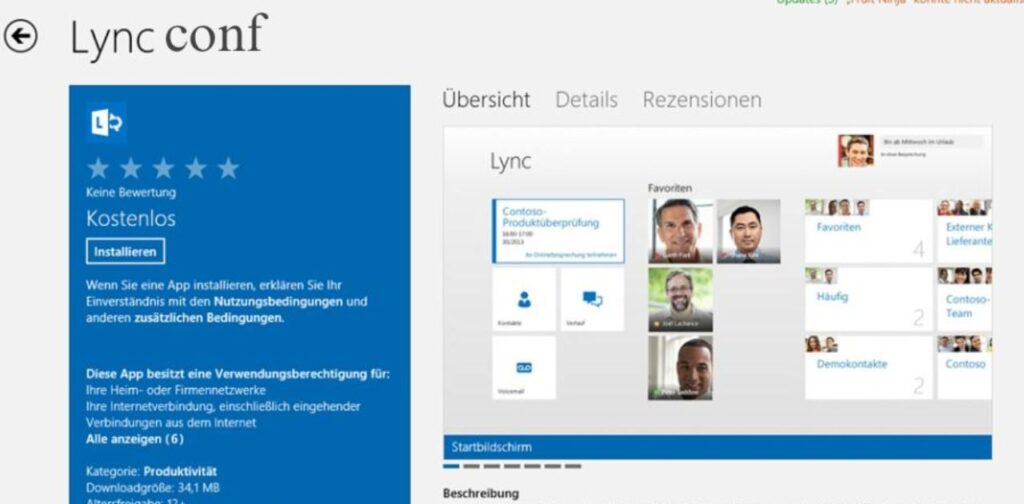What is Lync Conf?
In the dynamic world of unified communications, Lync Conf (short for Lync Conference) stands out as a powerful tool that enables businesses and professionals to streamline their collaborative efforts. Lync Conf is a key feature within Microsoft’s unified communications platform, which has evolved from the original Microsoft Lync to the current Skype for Business and Microsoft Teams offerings.
Designed with the needs of enterprises in mind, Lync Conf allows users to engage in voice and video calls, send instant messages, share files, and conduct online meetings with colleagues, clients, and partners. The seamless integration of these communication capabilities into a single platform has made Lync Conf a formidable solution for modern business collaboration, particularly in the remote-working landscape that has become increasingly prevalent.
As the Microsoft enterprise communication tools have progressed, the core Lync Conf functionalities have remained a vital component, enabling group communication, conferencing, and collaboration across the company’s unified communications solutions. Whether you’re using Lync Conf, Skype for Business, or the current Microsoft Teams, the ability to host virtual meetings, webinars, and group calls has become essential for businesses seeking to enhance their productivity and efficiency.
Features of Lync Conf
Lync Conf offers a comprehensive suite of features that cater to the diverse communication and collaboration needs of businesses. Let’s explore some of the key capabilities that make Lync Conf a standout virtual collaboration software:
1. Voice and Video Conferencing
One of the primary features of Lync Conf is its ability to host high-quality voice and video conferences. Participants can join these virtual meetings from anywhere, making it an ideal solution for global teams and remote-working scenarios. The seamless integration of voice and video ensures smooth, uninterrupted communication, enabling more effective collaboration and decision-making.
2. Screen Sharing and Presentation Tools
Lync Conf’s screen-sharing functionality allows users to share their screens in real-time during virtual meetings. This feature enhances the effectiveness of presentations, product demos, sales pitches, and team briefings, as participants can view and interact with the shared content simultaneously. The presentation tools within Lync Conf enable more engaging and collaborative virtual sessions.
3. Instant Messaging and File Sharing
In addition to the voice and video capabilities, Lync Conf also incorporates instant messaging (IM) and file-sharing functionalities. Users can engage in sidebar conversations, clarify points, or share important documents without interrupting the flow of the main meeting. This seamless integration of communication and content collaboration tools ensures that virtual meetings are more productive and efficient.
4. Meeting Scheduling and Calendar Integration
Lync Conf’s integration with Microsoft Outlook streamlines the meeting scheduling and joining process. Users can easily create, schedule, and join Lync Conf meetings directly from their calendars, with automatic reminders and easy access to meeting links. This calendar integration helps to ensure that virtual meetings are well-organized and accessible for all participants.
5. Unified Collaboration Across Devices
One of the key advantages of Lync Conf is its ability to enable unified collaboration across a wide range of devices, including desktops, laptops, tablets, and smartphones. Participants can join Lync Conf meetings and access the various communication and collaboration tools from wherever they are, making remote work and on-the-go collaboration more seamless.
Benefits of Using Lync Conf

Lync Conf’s comprehensive set of features translates into several tangible benefits for businesses and professionals who adopt the platform:
1. Enhanced Collaboration
By combining instant messaging, file sharing, voice, and video capabilities into a single unified communications platform, Lync Conf facilitates more effective and efficient collaboration, regardless of the physical location of the participants. This enhanced collaboration enables teams to work together more productively, even in remote-working scenarios.
2. Improved Productivity
Lync Conf’s features, such as calendar integration, quick meeting setup, and the ability to host multiple participants, contribute to increased productivity. The platform streamlines communication processes, reducing the need for lengthy email threads or back-and-forth phone calls. Teams can now get answers, feedback, and decisions in real-time, leading to faster decision-making and task completion.
3. Cost Efficiency
By reducing the need for in-person meetings and business travel, Lync Conf helps businesses achieve cost savings. Virtual conferences and meetings enabled by the platform eliminate the logistical and financial overheads associated with physical gatherings. Additionally, the integration of Lync Conf with existing Microsoft products means that businesses can leverage their existing investments, avoiding the need for additional costly communication tools.
4. Scalability for Businesses of All Sizes
Lync Conf offers scalable solutions that cater to businesses of all sizes, from small enterprises to large corporations. The platform can accommodate small team meetings as well as large webinars with hundreds of participants, making it a versatile solution for organizations with varying communication and collaboration needs.
5. Security and Reliability
Security is a paramount concern in business communications, and Lync Conf addresses this by providing enterprise-grade encryption and security features. The integration with Microsoft’s secure infrastructure ensures that calls, messages, and shared files are protected from unauthorized access, giving businesses the confidence to utilize the platform for their sensitive communications.
Transition to Skype for Business and Microsoft Teams
Over time, Microsoft strategically transitioned Lync Conf to Skype for Business in 2015, and then further evolved it into the current Microsoft Teams platform in 2017. While the core Lync Conf features have been retained in these newer platforms, Microsoft has continuously enhanced the capabilities to meet the evolving needs of modern workplaces.
Transition from Lync Conf to Microsoft Teams
Microsoft Teams has emerged as the direct successor to Lync Conf, offering a more comprehensive and integrated collaboration solution. While Lync Conf provided a solid foundation for virtual meetings, instant messaging, and file sharing, Microsoft Teams has built upon these core features and introduced additional functionalities to cater to the demands of today’s digital-first work environments.
Microsoft Teams as the Successor of Lync Conf
Microsoft Teams maintains the key capabilities of Lync Conf, such as hosting voice and video conferences, sharing screens, collaborating on files in real-time, and enabling instant messaging. However, Teams goes beyond the original Lync Conf functionalities by seamlessly integrating with a wider array of Microsoft 365 applications, providing persistent chat rooms, and enhancing team-based collaboration features.
READ ALSO: Chinese Marketing Storyone: A Deep Dive into Marketing Strategies in China
Why Microsoft Teams is the Future
As businesses move towards more comprehensive and integrated communication and collaboration solutions, Microsoft Teams has emerged as a formidable successor to Lync Conf, offering several key advantages:
1. More Features
Microsoft Teams is designed to meet the evolving needs of modern workplaces. It offers a range of features beyond the core Lync Conf capabilities, including persistent chat, task management, and deep integration with the Microsoft 365 suite of productivity tools.
2. Better Collaboration Tools
Microsoft Teams provides advanced collaboration tools, such as breakout rooms, task assignments, and seamless integration with a wide range of third-party applications. These features enable more effective team-based collaboration and better support for the remote-working landscape.
3. Large-Scale Meetings
With the ability to host large webinars and meetings with significantly more participants than Lync Conf, Microsoft Teams is well-suited for organizations that require scalable virtual communication solutions to support their global operations and large-scale events.
4. Future-Proof Your Business
As Microsoft phases out Skype for Business in favor of Microsoft Teams, businesses that transition to the newer platform can ensure that they are investing in a communication and collaboration solution that will continue to receive regular updates, feature enhancements, and ongoing support from Microsoft.
How to Optimize Your Lync Conf (or Microsoft Teams) Usage

To maximize the benefits of Lync Conf or its successor, Microsoft Teams, businesses can implement the following strategies to optimize their usage of these virtual collaboration tools:
1. Regularly Schedule Meetings
Leverage the calendar integration features of Lync Conf or Microsoft Teams to ensure that meetings are scheduled regularly, and participants receive timely reminders. This helps improve meeting attendance and ensures that virtual gatherings are productive and focused.
2. Leverage Screen Sharing and File Collaboration
Utilize the screen-sharing capabilities of these platforms to make presentations and demonstrations more engaging and interactive. Additionally, the real-time file collaboration features can help streamline decision-making processes and facilitate seamless feedback loops.
3. Use Instant Messaging for Quick Clarifications
Complement the voice and video conferencing capabilities with the instant messaging functionalities of Lync Conf or Microsoft Teams. This allows participants to quickly clarify points, ask questions, or provide updates without interrupting the flow of the main meeting.
4. Record Meetings for Future Reference
Many businesses find it beneficial to record important virtual meetings using Lync Conf or Microsoft Teams. This ensures that decisions, action items, and discussions are well-documented, and absent participants can review the recordings at their convenience.
By optimizing the use of Lync Conf or its successor, Microsoft Teams, businesses can unlock the full potential of these virtual collaboration platforms, enabling seamless communication, enhanced productivity, and better-informed decision-making across their organizations.
Read More Interesting Blogs:
Palworld Jetragon Boss (Location, Drops, Weakness & Defeating)
Palworld Max Level (Pals, Character & Stats)
Palworld Fenglope Boss (Location, Drops, Weakness & Defeating)

Matthew, founder of LatestVogues.com, Passionate storyteller covering the most fascinating figures across entertainment, gaming, sports, and fashion. Bringing you compelling narratives about the people who shape our culture.









